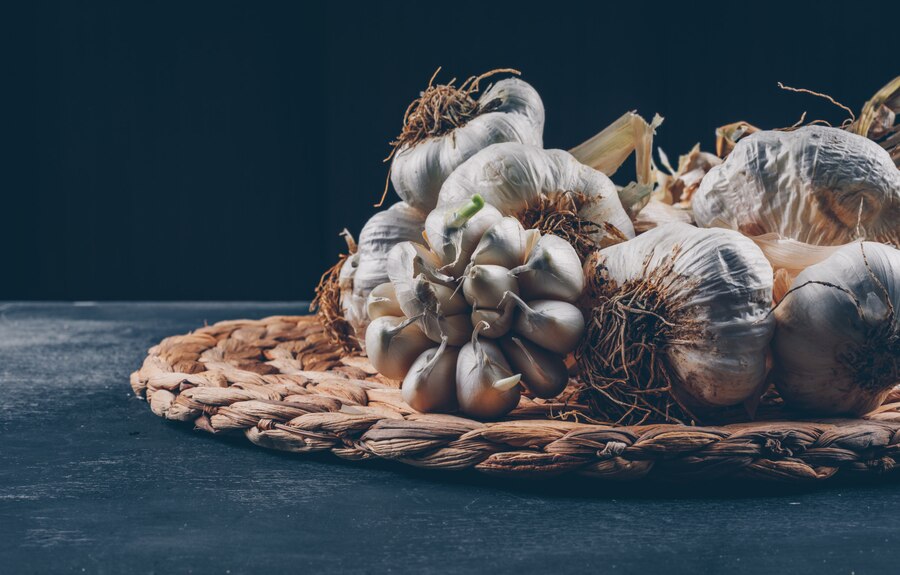Introduction
Organic garlic farming has become an increasingly profitable venture as more consumers seek natural, pesticide-free produce. The global shift toward healthier food choices has spurred a growing demand for organic garlic, making it an attractive crop for farmers looking to diversify their income sources. This article will explore the factors influencing profit margins on organic garlic farming, from initial investment costs to potential returns, with practical tips to maximize profitability.
The Growing Demand for Organic Garlic
Before diving into profit margins, it’s essential to understand why organic garlic farming has gained such popularity. Organic garlic is often considered a superior product due to its distinct flavor, higher nutritional value, and absence of chemical residues. This makes it highly sought after in markets focusing on organic and sustainable farming practices.
Factors Affecting Profit Margins on Organic Garlic Farming
1. Initial Investment Costs
The start-up costs for organic garlic farming are relatively low compared to other crops, but there are several essential expenses to account for:
- Soil Preparation: Organic garlic requires well-drained, fertile soil. Farmers often need to invest in organic compost or other soil amendments, especially if the land hasn’t been farmed organically before.
- Seed Garlic: Organic garlic bulbs are typically more expensive than conventional ones, as they must be grown without synthetic chemicals and saved for the next planting season.
- Labor Costs: Garlic farming is labor-intensive, especially during planting and harvesting seasons. Organic farming also requires additional time and care to maintain soil health and avoid synthetic pesticides or fertilizers.
2. Yield per Acre
One of the key factors influencing profit margins on organic garlic farming is the yield per acre. On average, an acre of garlic can yield around 5,000 to 8,000 pounds of garlic, depending on the region, climate, and farming practices. While organic garlic yields tend to be slightly lower than conventional garlic due to organic farming methods, the price premium for organic garlic can more than compensate for the reduced yield.
3. Market Prices for Organic Garlic
The price of organic garlic fluctuates based on location, demand, and quality. Generally, organic garlic commands a premium price, often 30-40% higher than conventionally grown garlic. This price difference is a significant contributor to better profit margins in organic garlic farming.
However, market prices can also vary depending on the local demand for organic produce, the scale of the farm, and the quality of the garlic harvested. Organic garlic can be sold directly to consumers at farmers’ markets, through CSA (community-supported agriculture) programs, or via local grocery stores and restaurants that prioritize organic ingredients.
4. Production Costs
Organic farming practices, though generally more labor-intensive, can have a positive impact on long-term soil health and reduce the need for expensive synthetic inputs. However, organic farmers must invest in:
- Organic Certification: Certification is necessary to market garlic as “organic.” This process can cost between $500 and $2,000 per year, depending on farm size and location.
- Crop Management: Organic garlic requires careful management of pests and diseases using non-chemical methods such as crop rotation, organic sprays, and manual weeding.
- Harvesting: The harvesting process for garlic is labor-intensive. After the garlic bulbs are harvested, they need to be cured and stored properly to maintain quality until they are sold.
5. Post-Harvest Handling and Storage
Proper post-harvest handling is crucial to maintaining the quality of organic garlic. Garlic bulbs must be cured in a dry, well-ventilated area for several weeks to prevent mold and rot. Additionally, organic garlic should be stored in a cool, dry place to preserve its shelf life. These practices are essential to ensure that the garlic remains in top condition for sale.
6. Additional Revenue Streams
Organic garlic farmers can increase their profit margins by diversifying their income streams. Some potential revenue sources include:
- Selling Garlic Scapes: The flower stalks that emerge before the garlic bulb mature are called scapes, and they are a popular gourmet ingredient.
- Garlic Powder and Supplements: If you have excess garlic that isn’t selling fresh, you can process it into garlic powder, garlic oil, or even garlic supplements to tap into a growing market for functional foods.
- Tours and Workshops: For farmers with large operations, offering farm tours and garlic-growing workshops can be an additional source of income while promoting your organic products.
Profit Margins on Organic Garlic Farming: A Comparison Chart
| Factor | Conventional Garlic Farming | Organic Garlic Farming |
|---|---|---|
| Initial Investment | Lower cost, synthetic inputs | Higher cost, organic certification |
| Seed Cost | Lower cost | Higher cost (organic seeds) |
| Labor Costs | Moderate | Higher due to organic practices |
| Yield per Acre | 8,000-10,000 lbs | 5,000-8,000 lbs |
| Market Price | $0.80-$1.50 per lb | $1.20-$2.00 per lb |
| Annual Profit Margin | 20-30% | 40-50% |
| Post-Harvest Handling Costs | Moderate | Higher (requires careful curing and storage) |
| Revenue from Garlic Scapes | Not applicable | $1,000 – $1,500 per acre |
| Revenue from Value-added Products | $500 – $2,000 | $1,000 – $3,000 |
Profit Potential from Organic Garlic Farming
Based on the data, organic garlic farming can offer significantly higher profit margins compared to conventional farming, with profit margins ranging from 40% to 50%. While organic garlic farming requires more effort, such as higher labor costs, investment in organic certification, and careful management of crops, the price premium for organic garlic can make it a highly profitable venture.
The revenue from garlic scapes and value-added products like garlic powder can further boost profits. The ability to sell garlic directly to consumers and command higher prices for organic products is a key factor in improving profit margins.
Challenges in Organic Garlic Farming
While the potential for profitability is high, there are several challenges organic garlic farmers may face:
- Pest and Disease Management: Organic garlic farming requires careful attention to pest control. Without synthetic pesticides, farmers must rely on natural methods to control pests, which can be less effective and more labor-intensive.
- Climate Sensitivity: Garlic is highly sensitive to weather conditions, requiring a cool climate with well-drained soil. Farmers in regions with inconsistent weather patterns may face difficulties in maintaining steady yields.
- Market Competition: As demand for organic garlic grows, the competition among organic garlic farmers increases. Securing a niche market and maintaining product quality are essential to staying competitive.
Conclusion
The profit margins on organic garlic farming are influenced by various factors, including the initial investment, market prices, yield per acre, and post-harvest handling. Despite the higher labor costs and the challenges of organic farming practices, organic garlic offers farmers the opportunity for higher profit margins compared to conventional farming methods.
By focusing on sustainable practices, diversifying revenue streams, and maintaining high-quality standards, organic garlic farmers can achieve substantial profits. As consumer demand for organic and healthy food continues to rise, the future of organic garlic farming looks bright, offering a lucrative opportunity for those willing to invest the time and effort required to succeed.










